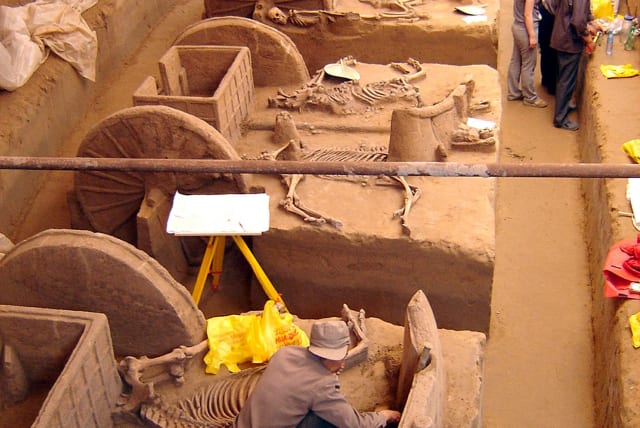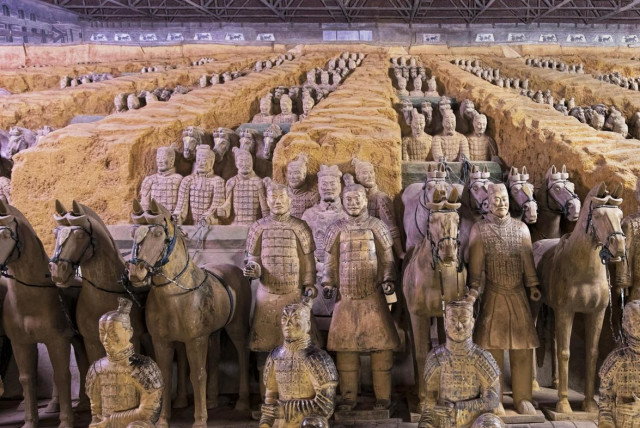4,000 year old palace discovered in central China

The archeological discovery sheds light on the architecture built during the Xia dynasty, an early Chinese dynasty mentioned in legends.
Archeologists have discovered the remains of a 4,000-year-old palace in an ancient Chinese walled city at the archeological site of Xinmi, in Henan Province, central China, state-run news agency Xinhua reported.
The ancient walled city at Xinmi is thought to have been built during the Xia dynasty, between 2070 BCE and 1600 BCE.
Archaeologists discovered the remains of this ancient city several years ago on the eastern bank of the Zhenshui River, covering a rectangular area of approximately 176,000 square meters.
This well-preserved walled city is associated with the Longshan Culture, an ancient civilization that once inhabited the area covered by modern Henan province and other neighboring regions of China.
The remains of the palace consist of a foundation structure built with rammed-earth construction techniques using compacted raw materials like earth, chalk, or lime.
The remains of the palace are approximately 60 by 30 meters and cover an area of over 1,800 square meters. It is high at the center and low on all four sides, with a flat surface and rows of evenly distributed column holes.
Palace remains shed light on ancient construction styles
The holes in the structure shed light on what the ancient complex once looked like. Li Bo, head of the excavation team, told Xinhua that they believe the holes show that “the foundation belonged to a housing complex with terraces in the south and north, cloisters in the east and west, and a yard in the center.”
Other archeological discoveries thought to date back to the Longshan Culture and the Xia dynasty period were made in an ancient city in Zhoukou, also located in Henan Province. Researchers found the remains of ash pits, ditches, and other architectural remnants at the Zhuqui Temple site.
Outstanding among these discoveries were the remains of two circular buildings consisting of earth columns and adobe walls, likely used for grain storage.
Fang Lixia, an archaeologist who led the excavation team in Zhoukhou told Xinhua that these findings will shed light on ancient agricultural practices in the region.
Henan Province is home to several archeological discoveries dating back to a variety of ancient Chinese dynasties.
Jerusalem Post Store
`; document.getElementById("linkPremium").innerHTML = cont; var divWithLink = document.getElementById("premium-link"); if (divWithLink !== null && divWithLink !== 'undefined') { divWithLink.style.border = "solid 1px #cb0f3e"; divWithLink.style.textAlign = "center"; divWithLink.style.marginBottom = "15px"; divWithLink.style.marginTop = "15px"; divWithLink.style.width = "100%"; divWithLink.style.backgroundColor = "#122952"; divWithLink.style.color = "#ffffff"; divWithLink.style.lineHeight = "1.5"; } } (function (v, i) { });

